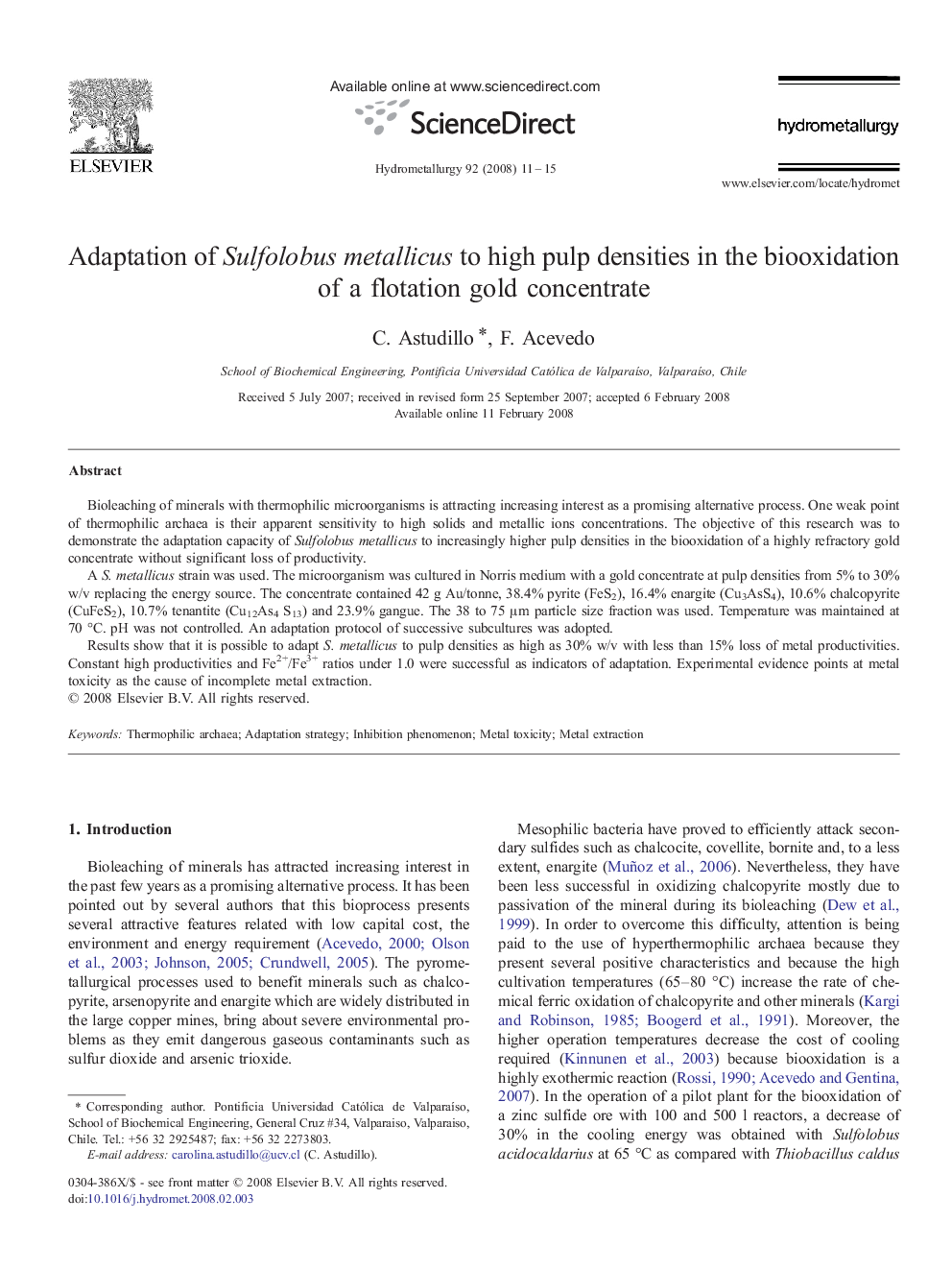| Article ID | Journal | Published Year | Pages | File Type |
|---|---|---|---|---|
| 213424 | Hydrometallurgy | 2008 | 5 Pages |
Bioleaching of minerals with thermophilic microorganisms is attracting increasing interest as a promising alternative process. One weak point of thermophilic archaea is their apparent sensitivity to high solids and metallic ions concentrations. The objective of this research was to demonstrate the adaptation capacity of Sulfolobus metallicus to increasingly higher pulp densities in the biooxidation of a highly refractory gold concentrate without significant loss of productivity.A S. metallicus strain was used. The microorganism was cultured in Norris medium with a gold concentrate at pulp densities from 5% to 30% w/v replacing the energy source. The concentrate contained 42 g Au/tonne, 38.4% pyrite (FeS2), 16.4% enargite (Cu3AsS4), 10.6% chalcopyrite (CuFeS2), 10.7% tenantite (Cu12As4 S13) and 23.9% gangue. The 38 to 75 μm particle size fraction was used. Temperature was maintained at 70 °C. pH was not controlled. An adaptation protocol of successive subcultures was adopted.Results show that it is possible to adapt S. metallicus to pulp densities as high as 30% w/v with less than 15% loss of metal productivities. Constant high productivities and Fe2+/Fe3+ ratios under 1.0 were successful as indicators of adaptation. Experimental evidence points at metal toxicity as the cause of incomplete metal extraction.
